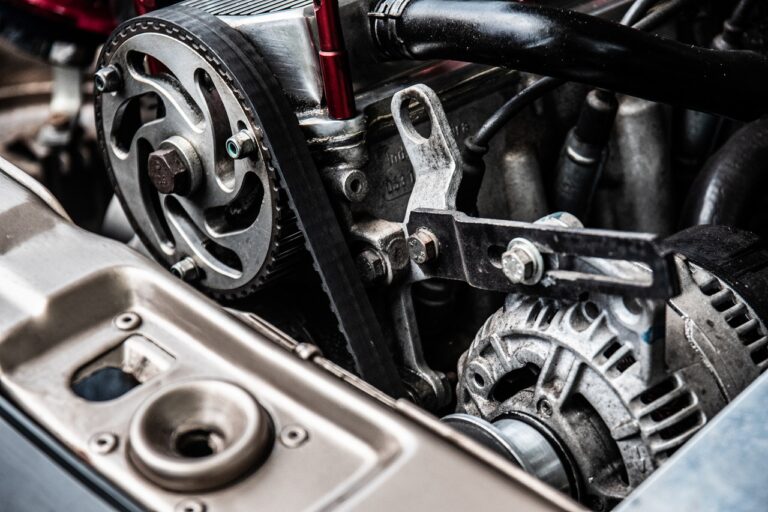You ARE More Than the Sum of Your Parts

Contrary to popular belief…
In medicine, and particularly in physical therapy, we often use analogies to describe the human body. In particular, analogies using machines, such as cars, help to describe motion and movement. But there is one major difficulty with the analogies. You are NOT a machine.
You and I have all the same parts that make us move. We can do fantastic activities, some of which we might consider mundane depending on our fitness levels. Through a day, your knees might bend a thousand times, sometimes under load (like climbing stairs or running), sometimes without load (like when sitting).
Pretty mundane when you think about. Big deal, right? So what, my knees bend. But if you have knee pain, every movement of that knee might be a blatant reminder that climbing stairs and even tucking your knee when sitting is anything but mundane.
You are MORE than just the sum of all of your body parts.
We all have the same moving parts. Consequently, we should all be able to do the same things. But it’s not that simple, is it?
Let’s face it…you cannot run as fast as Usaine Bolt even though you have legs, arms, and a torso that have the same muscular structures as he.
I’m guessing you cannot throw a football like Tom Brady, either. (Love him or hate him, he is showing he is the best…quarterback, at least).
To say nothing of the swimming community that I hold so dearly. How many people in the world can swim like Michael Phelps? Precisely ONE! How about swimming like Katie Ledecky? Same answer.
But we all have the same body parts that are needed to run, or throw, or swim. Therefore, anyone, or maybe better said, ALL of us can do these things.
Hopefully you get my bit of sarcasm there. You see, it’s not just that we have the same parts. We are not machines, like cars, where all the same models perform the same way.
Why Analogies Don’t Always Work
I often use analogies relating to cars to describe how movement and physics work on the human body. These analogies can be great tools, but have their disadvantages.
It’s actually much easier to fix a car than to “fix” a person’s pain. After all, you can just buy a new part, install it, and drive the care like you always have. Simple really. Furthermore, it’s rare that the car drives away only to do the very thing that broke it in the first place. That means, once you replace the part that isn’t working, your car is good-to-go.
Not so fast with humans, though.
Take, for instance, the knee pain I mentioned earlier. As you age, you might have debilitating knee pain that forces the decision for surgery to “fix” it. In surgery, you can have your knee replaced. You have a new part installed, just like the car…right?
It’s not the same though. All of you who have had this procedure know that you did not have the “new part” installed and walk away better than you walked before the surgery.
That’s because you are NOT a machine.
Nevertheless, the new parts are sometimes necessary to get you back to moving. It just takes a little longer than simply bolting it in and driving away…like in the car analogy.
…In the case of replacing the suspension components on the car, the car might actually handle worse because of some other shortfall that can’t handle the increased performance. In that case, the whole actually becomes less than the sum of the parts.
The Sum of Parts
As was previously stated, you are MORE than the sum of your body parts. What that implies is that you can do more than what any of your individual parts can accomplish on their own.
Actually, this is true for all of us with everything we do.
Going back to the car analogy, if you need new suspension components, you might buy ones that are slightly better than originally on the car. Your car can now handle corners and stop more quickly than before. But the suspension alone won’t make a difference in cornering and braking, because your tires will also need to be up to the new performance level. If you get better tires, then you might find that the body of the car has too much flex in it, or that it is too heavy, or too long to be able to corner or stop more quickly.
In other words, the performance level is dependent on more than just one part.
Additionally, in the case of replacing the suspension components on the car, the car might actually handle worse because of some other shortfall that can’t handle the increased performance. In that case, the whole actually becomes less than the sum of the parts.

Throwing is More Than Just Your Shoulder
With this in mind, I will use an example of a patient that recently was seen for his shoulder pain.
He was a baseball player that had shoulder pain that limited his ability to throw. He had a bit of a history of injuries from playing high school football and baseball. He had shoulder surgery to fix a torn labrum. The surgery was successful, and he had returned to playing baseball at his college.
As he went through the season, his pain returned…just like prior to the surgery.
He was frustrated and afraid that he had re-injured his shoulder and would require surgery…again!
As he presented to my office for another opinion on what to do, I asked about what he had done in his previous rehabilitation following the surgery. He named all the standard exercises for the shoulder that you need to do following the surgery.
You might not have guessed, but the throwing motion requires using much more of you than just the arm and shoulder.
So the part (labrum) was “fixed,” so the shoulder was “fixed.”…or so he thought…. Time to get back to throwing, right? Then his pain returned.
However, he never mentioned being taught any exercises for the rest of his body.
Consequently, the shoulder was never assisted by the rest of the body in its work to throw. This led to increased stress on the shoulder and a return of the pain.
Back to the point, the throwing motion is MORE than the sum of your body parts.
He began lower body exercises, core strengthening and retraining, and shoulder blade focused exercises. By focusing on connecting the lower body to the core and transferring that force through the shoulder blade to the arm, the stresses across the shoulder were actually reduced.
Subsequently, the final result was that he could throw a ball 12-miles per hour faster without any shoulder pain. Also of note, he was able to hit the ball better and farther, with much more power because of getting the entire body into his motion.
Conclusion
While you might not improve your throwing speed to a level that makes you able to play baseball professionally, you can improve your mobility and strength to enable you to get through your day without mundane tasks limiting you.
Remember that you are more than just the sum of your parts. One part should not be the only focus that you have. You can’t just simply have a new starter installed and drive away happy. You are not a machine.
However, sometimes one part does need attention, and maybe even surgery, before you can build yourself back to doing what you love.
Finally, remember that we all have the same moving parts, and we can do amazing things. Just look at Usain Bolt, Michael Phelps, and the “old man” Tom Brady for some encouragement. But remember, it’s not just Usain Bolt’s feet, or Michael Phelps’ surfboard trunk, or Tom Brady’s shoulder that makes them great.
It’s the sum of all the parts working together that adds a different quality to make them perform better than could be predicted.
If you want to know how this concept relates to a pain or problem that you are experiencing (whether that be shoulder, knee, or back pain), or if you are having a limitation in your ability to move the way you need to in daily life or sports (walking, running, swimming), contact us via e-mail or phone. We’d love to help answer your questions and get you back to doing what you love!
Archives
- March 2024
- February 2024
- January 2024
- October 2023
- September 2023
- April 2023
- December 2022
- November 2022
- October 2022
- August 2022
- July 2022
- June 2022
- May 2022
- March 2022
- January 2022
- April 2021
- February 2021
- January 2021
- September 2020
- August 2020
- July 2020
- June 2020
- April 2020
- January 2020
- September 2019
- June 2019
- May 2019

3 Responses
Hi Scott,
As always I enjoyed your blog. I wish my body was a machine and I could get a complete tuneup and be good to go! However as a bike on my indoor seated elliptical, meet A friend a few days a week to walk around the track at Carver, and walk as much as possible in the afternoon and evening, I am feeling stronger and more balanced! Lee and I got to ride outdoor bikes for five days in OC a couple weeks ago. I have mastered going up straight ladders in swimming pools, Which was quite an accomplishment for me. I was just talking about you on the track this morning. Hope you are doing well! I am so glad that people are starting to go out and about again. Take care and have a great day!
Thanks for the continued wisdom in your blogs. I have been doing the exercises you recommended for my ailing shoulder and hip, my most recent maladies, and I am really making very good progress. I have been following your physical therapy advice for various injuries for over twenty years and that is what has kept me in the gym, where I will return when it reopens, even at 77 years of age. Thanks for helping me stay active.